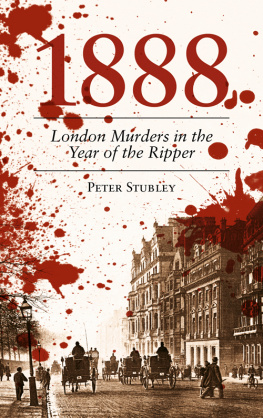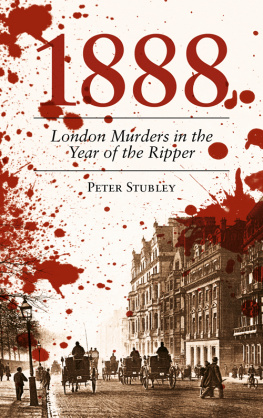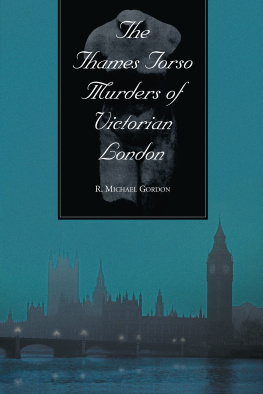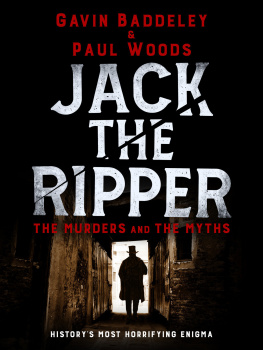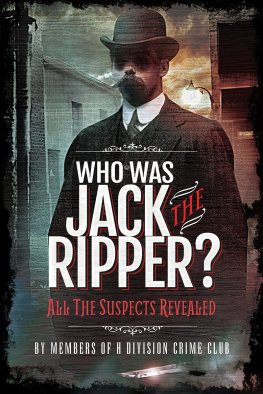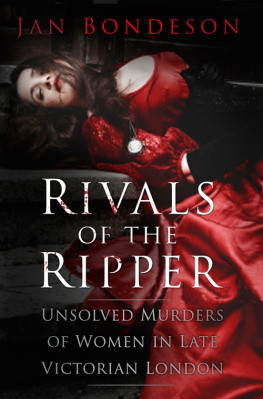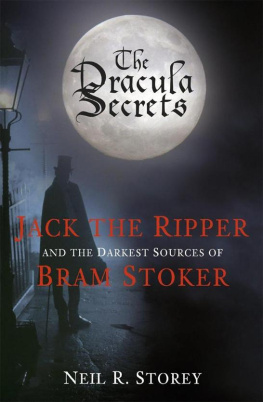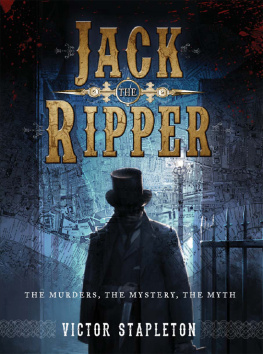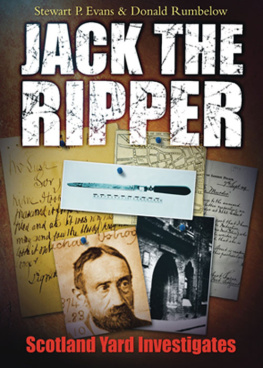
CONTENTS
Prologue
South
North
West
East
Markets
Pubs
A Nagging Toothache
At the Pleasure Grounds
The Ladys Maid
The Bankers Wife
Trouble and Strife
The Neglected Wife
The Triple Event
The Runaway Soldier
One Night in Judd Street
At the Workhouse
A Telegram for Mr Spickernell
Want and Murder
Ten Shillings
Epilogue
Prologue
As the church bells rang in the New Year across central London, a woman lay dying. Her left arm had been sawn off and her face was swollen with bruising to her forehead and right eye. Elizabeth Gibbs was slowly succumbing to shock and exhaustion despite the efforts of the medical staff at St Georges Hospital in Hyde Park. Outside the temperature was dropping towards - 4 Celsius and the frost lay so thickly on houses, trees and roads that it appeared as if snow had fallen. The capital was in the middle of its coldest winter for thirty years. Later that morning thousands of people would swarm across the frozen ponds and lakes of the city, happy to risk a cold bath when the ice gave way. Life droned on regardless as Elizabeth Gibbs slipped away at 2 p.m. that afternoon, becoming the first homicide victim of 1888.
By the end of the year the police would count a total of 122 cases, of which twenty-eight were classed as murder and ninety-four as manslaughter. More than half of the victims were female, and eight were said to be of the unfortunate class, living on the margins of existence by selling their bodies for a few pennies at a time. Five of those eight are generally accepted to have been the victims of a single serial killer who would never be identified, let alone arrested or put on trial. The newspapers called him Jack the Ripper, and were only too happy to promote the legend to help make them a profit. And it did so, handsomely. But among the acres of newsprint devoted to the unknown murderer, the Victorian public would have read reports of other victims who would not be remembered over 100 years later. Some of these cases would be mentioned in Parliament and in the pages of The Times , but they were far less sensational when compared to a knife-wielding maniac loose on the streets with a lust for blood.
Elizabeth Gibbs was one of these other homicide victims, a respectable married woman living in the wealthy area of Belgravia, on a road that was home to Alfred Tennyson, Ian Fleming and Mozart over the years. She was sixty-eight years old and was enjoying a pleasant walk along Grosvenor Place, near Buckingham Palace, when she was knocked down and run over by a horse-driven van carrying bottles of mineral water. Her arm was so seriously injured that it had to be amputated by a surgeon in an unsuccessful attempt to save her life. Following her death, police charged a forty-three-year-old delivery driver from Shoreditch called Alfred Winwood with manslaughter. Winwood was convicted and sentenced to six months hard labour.
It is just one story among dozens from 1888, and the cast list includes all ranks and classes of society from every corner of the city; from the unnamed newborns dumped on the street to the seventy-one-year-old retired major shot dead at his front door, and the Jewish immigrant working for slave wages in the East End to the Englishwoman living in relative comfort in the West End.
Murder is the ultimate crime, and a particularly shocking one can attract the attention of Queens and prime ministers and help bring about real change. On the other hand, some suspected murders were virtually ignored by the press and public because they were so commonplace in nineteenth-century Britain. But each case can illuminate hidden parts of society and provide colour to those areas well charted in textbooks. Not just by telling the stories of the victims and their killers but also the places that the two met, the cause of death, the action or inaction of the police and the prosecuting authorities, and the reactions of judges and juries. The historian Richard Cobb wrote that famous murder trials light up the years and give a more precise sense of period than the reigns of monarchs or the terms of office of presidents. What might be called murderography has the potential to describe a specific period of time better than any other kind of historical study. This book aims to use the stories of those victims of homicide in one year in late-Victorian London to illustrate the period, and to hopefully give an impression of what it might have been like to live through one of the most exciting eras in our history.
At this time the British Empire was at the height of its influence and power economically, politically and culturally. London was its capital, and therefore the capital of the world. Its inhabitants included: Florence Nightingale; H.G. Wells; George Bernard Shaw; Arthur Conan Doyle; Oscar Wilde; the American author Henry James; a young student by the name of Gandhi; the Elephant Man, Joseph Merrick; a six-year-old Virginia Woolf; and the fourteen-year-old Winston Churchill. And ruling over all was Queen Victoria, Empress of India, who had celebrated her Golden Jubilee in the summer of 1887 with a vast procession through the streets, and a banquet for kings and princes from across the world. The affection and loyalty of her subjects was obvious. One of the spectators that day summed up the general mood by writing in her diary: We are filled with enthusiasm and loyalty. What an Empire! What a City! What an Age! What a Queen!
Queen Victoria had celebrated the arrival of 1888 by remembering the previous twelve months as being so full of the marvellous kindness, loyalty and devotion of so many millions. She wrote in her journal that there was not one mishap or disturbance, not one bad day never never can I forget this brilliant year. But twelve months later her mood was very different. This time she marked the last day of this dreadful year, which has brought mourning and sorrow to so many, and such misfortunes, and ruined the happiness of my darling child. Although the Queen was referring mainly to the death of her son-in-law, the German Emperor Frederick III, there had been little to celebrate in 1888. The economy was still struggling through a depression which began in the 1870s, protestors continued to take to the streets, workers went on strike, and the population was gripped by moral panic over a series of murders without parallel in history. For this was the Year of the Ripper.
The RMS Ormuz was the fastest ship in the world. It was 482ft long, 52ft wide, and weighed more than 6,000 tons but its 8,500hp steam engines could propel it halfway round the globe in less than four weeks. Not so many years earlier the same trip would have taken three months. It was equipped with berths for nearly 400 passengers 106 in first class, 170 in second and 120 in steerage as well as two saloons, two promenade decks, a library, a drawing room, a coffee room, two smoking rooms and a hospital. No wonder that its proud owners, the Orient Line, had seen fit to boast: Were the world a ring of gold, Ormuz would be its diamond. But for John King it was just a means of getting home.
The thirty-nine-year-old chemical engineer was making the voyage from Australia to London with mixed emotions. Just four months earlier, in April 1888, he had arrived in Sydney with high hopes of finding his fortune in the fabled workers paradise. The auspices had seemed favourable, for that year marked the centenary of the first landing of 1,350 colonists at Sydney Cove. Alas, it had not worked out as he expected and he had decided to return home to his wife, Mary, and their two young children, eight-year-old John Jr and seven-year-old Alice, in Rutherglen, Lanarkshire, not far from Glasgow and the Govan shipyards where the Ormuz was built in 1886.
Next page
